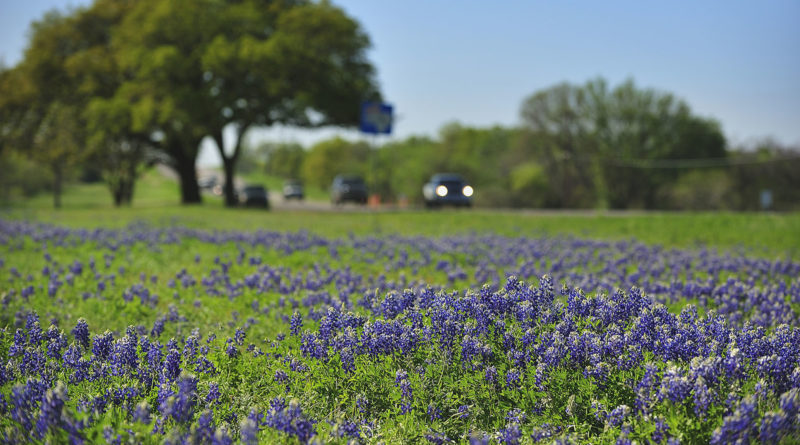Bluebonnets and Texas History
By Janna Zepp
The little spots of blue and white along our Texas highways signal springtime in Texas well before the vernal equinox ever happens.
It’s bluebonnet time in Texas.
The typical peak of Texas bluebonnet season runs from the end of March and goes through mid-April. Sometimes, I see them blooming even a little later than that.
As pretty as those little flowers are, get ready for some traffic headaches as tourists pull over to photograph their children and grandchildren in fields of bluebonnets. Be patient; I plan to do the same thing with my twin daughters when I get the chance.
I think it’s fitting that our state’s flower blooms near Texas Independence Day, which is observed every March 2.
I’ve read that the bluebonnet of Texas is actually five flowers. Apparently, there was quite a fight in the Texas legislature for most of a century over which of the many types of bluebonnets should represent Texas. At last, they settled on five:
Lupinus subcarnosus, the original champion, grows naturally in deep sandy loams from Leon County southwest to LaSalle County and down to the northern part of Hidalgo County in the Valley. It is often called the sandy land bluebonnet. The flower reaches peak bloom in late March and does not last in clay soils.
Lupinus texensis, the favorite of tourists and artists, provides the blue spring carpet of Central Texas. It is widely known as THE Texas bluebonnet. The flowering stalk is tipped with white and hits its peak bloom in late March and early April. It is the easiest of all the bluebonnets to grow.
Lupinus Havardii, also known as the Big Bend or Chisos Bluebonnet, is the largest of the Texas bluebonnets, growing up to three feet. It is found on the flats of the Big Bend country in early spring and is tough to grow outside its natural habitat. Lupinus concinnus is a tiny flower, from 2 to 7 inches, with flowers which combine elements of white, rosy purple and lavender. Commonly known as the annual lupine, it grows in the Trans-Pecos region, blooming in early spring.
Lupinus plattensis ranges from the north into the Texas Panhandle’s sandy dunes. It is the only perennial species in the state and grows to about two feet tall. It normally blooms in mid to late spring and is also known as the dune bluebonnet, the plains bluebonnet and the Nebraska Lupine.
Confused? Yep. Me too. And it gets more confusing.
There are two other types of bluebonnets: white and pink.
Once in a while you’ll stumble across an albino bluebonnet. It’s kind of like finding a shamrock in regular clover. Amid a sea of blue, there will be six or seven white ones clumped together like a bleach stain on a pair of jeans…except that it’s pretty.
Pink bluebonnets are another matter. Many have been carefully bred and cultivated to generate a hue that ranges from palest pink to almost red in color. Why we’d want to mess with perfection, I don’t know, but some folks just have to have pink. There is, however, a wild pink bluebonnet that grows not far from the Alamo, and it’s only in that area that these rare flowers bloom.
The legend that surrounds the wild pink bluebonnet is that the ground was stained with the blood of those who fought the Battle of the Alamo for Texas Independence. The flowers that grew where the blood flowed came up pink, becoming a symbol for the struggle to survive and a memorial for those who died.
So when you look at that sea of blue with the occasional white patches and the rare pink variety, maybe next time you’ll see more than natural Texas beauty; you’ll see a reminder of our strange, beautiful, brutal, tragic, terrible, and triumphant history as a republic and then as a state. And it’s then that you’ll truly see Texas.




